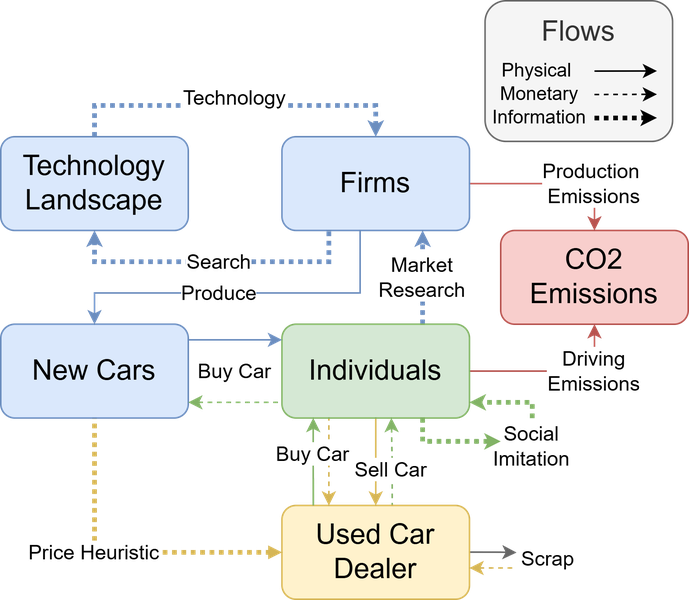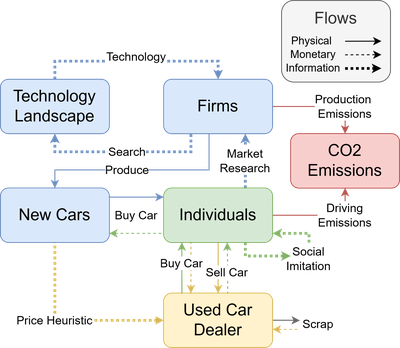Driving in the wrong direction? A co-evolutionary model of electric vehicle adoption and innovation 1.0.0
Car-centric societies face substantial challenges in moving towards sustainable
mobility systems, with internal combustion engine vehicles remaining a major
source of emissions. Electric vehicles play a critical role in addressing this challenge, yet their diffusion depends on the interaction of consumer behaviour, firm
innovation, and policy incentives. This paper develops an agent-based model to
examine these dynamics, calibrated on the data for the state of California over
2001-2023. In the model, heterogeneous car users influenced by their social peers
purchase cars, both new and used, based on discrete choice theory, while manufacturers develop new car models, adjusting prices accordingly. We examine how
different policy combinations can achieve deployment targets while balancing economic costs, emissions and consumer utility. Our simulations compare individual
and combined policy instruments, including carbon pricing, new and used car purchase rebates, production subsidies and electricity price subsidies. Results indicate
that only carbon pricing and new vehicle purchase rebates achieve a target of 95%
electric vehicle adoption by 2035. Each policy has key trade-offs: carbon pricing
substantially reduces consumer welfare, while new purchase rebates create heavy
fiscal burdens. Policy combinations prove to be more effective by reducing the
intensity of the required interventions and minimising the induced rebound effect
and trade-offs. Extended simulations till 2050 demonstrate that EV adoption rates
stabilize after policy withdrawal. However, cumulative emissions in the business-as-usual scenario are lower than those of a policy-induced mobility transition until
the 2040s, indicating that additional policy is required to reduce reliance on private
vehicles.

Release Notes
1.0
